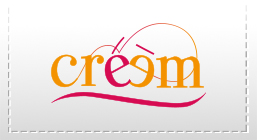Drawing Definition & Meaning
Content

But instead of one person claiming all the revenue for themselves, each partner includes their share of income (or loss, if business hasn’t been good) on their personal tax return. Also known as the owner’s draw, the draw method is when the sole proprietor or partner in a partnership takes company drawing definition in accounting money for personal use. The stock that is used by the proprietor or the owner for personal purposes represents the stock that is used within the organisation. This is because the organisation and owners are treated one and the same for the purpose of identifying transactions that generate income.
- A drawing account is maintained to keep a record of such withdrawals.
- The ledger is updated monthly and closed upon the end of the accounting period.
- Under this method, the capital invested at the beginning remains constant unless additional capital is introduced.
- Drawings are withdrawn from the business, mostly in cash form, for the owner’s personal expenses.
- Bench assumes no liability for actions taken in reliance upon the information contained herein.
- In general, only the owners of sole proprietorships and partnerships can draw cash straight from the business for personal use.
An important characteristic of an expense is that it is a cost which does not result in the acquisition of an asset. Harold Averkamp has worked as a university accounting instructor, accountant, and consultant for more than 25 years. He is the sole author of all the materials on AccountingCoach.com. This post is to be used for informational purposes only and does not constitute legal, business, or tax advice. Each person should consult his or her own attorney, business advisor, or tax advisor with respect to matters referenced in this post. Bench assumes no liability for actions taken in reliance upon the information contained herein.
Connect With a Financial Advisor
Large companies and corporations will not deal the issue of drawings very often, simply because owners can be quite detached from day to day running of the business. While it easy to account for drawings in a small business such as a bakery, it is impossible for a Microsoft shareholder to simply go into a Microsoft store and take a bundle of cash as drawings! In such cases, owner’s receive money from the business via dividends or a shareholder’s salary. By transferring the balance from the drawing account to the owners’ equity capital account.

A drawing account is an accounting record maintained to track money and other assets withdrawn from a business by its owners. A drawing account is used primarily for businesses that are taxed as sole proprietorships or partnerships. Owner withdrawals from businesses that are taxed as separate entities must be accounted for generally as either compensation or dividends. A drawing account is an accounting record preserved to follow money withdrawn from a company by its owners. It is the sum of cash or value of goods withdrawn from the business by the owner for his personal use. A drawing account is used mainly for businesses that are taxed as sole proprietorships or partnerships.
Types of Accounts
The results of the experiment show how drawing can be further used as a tool in management education by facilitating the visualization of the managerial contexts participants work within. State and federal personal income taxes are automatically deducted from your paycheck. On the personal side, earning a set salary also shows a steady source of income (which will come in handy when applying for a mortgage or anything else credit-related).
In most cases, you must be a sole proprietor, member of an LLC, or a partner in a partnership to take owner’s draws. Last year, Partnership A distributed $10,000 per month from the partnership business to its partners for personal use, resulting in a total cumulative annual withdrawal balance of $120,000. In essence, when drawings are made, a credit should offset the debit in the double-entry bookkeeping system. Typically, the credit goes into another account, in most cases the cash account. An owner’s draw is a legitimate way for the owner of a sole proprietorship or partnership to pay himself.
How to manage drawings in your business accounts
When it comes to financial records, record owner’s draws as an account under owner’s equity. Any money an owner draws during the year must be recorded in an Owner’s Draw Account under your Owner’s Equity account. Owner’s draws are usually taken from your owner’s equity account. Owner’s equity is made up of different funds, including money you’ve invested into your business.

The cash or inventory withdrawn from the company by the proprietor for his own personal use is referred to as a drawing. Since the proprietor withdraws from his capital, it cannot be declared as a liability or an asset. Drawing is actually a deduction that is withdrawn from the capital by debiting the capital account. It’s a movement of assets and equity, which is shown in the balance sheet.
All these things you are paying for are examples of the business’s expenses. Learn accounting fundamentals and how to read financial statements with CFI’s free online accounting classes. Designed for freelancers and small business owners, Debitoor invoicing software makes it quick and easy to issue professional invoices and manage your business finances. Owner draws are for personal use and do not constitute a business expense. This means, among other things, that they are not tax deductible. Sole proprietors, partners, and owners of LLCs are free to pay themselves as they wish.
- The basic definition of an expense is money you spend to run your business.
- The concepts of capital and drawings are diametrically opposed yet equally vital for grasping the fundamentals of business financing.
- First, drawings provide a way for business owners to withdraw money from their businesses for personal use.
- You can then make payments to the drawing account if necessary.
- Hence, this particular expense with the cash of business shall be classified as drawing.
